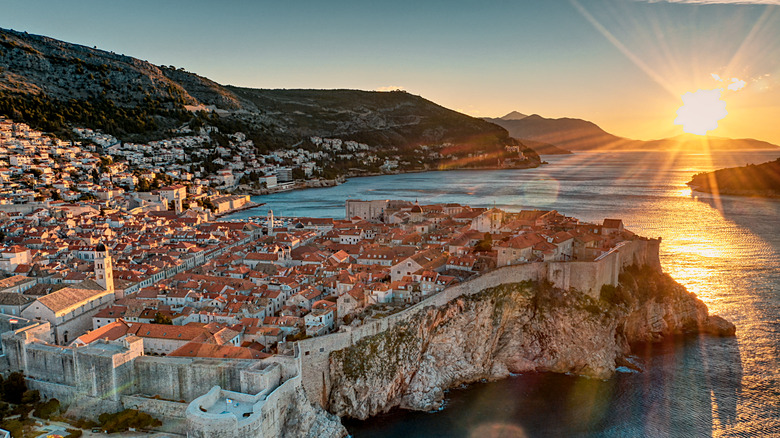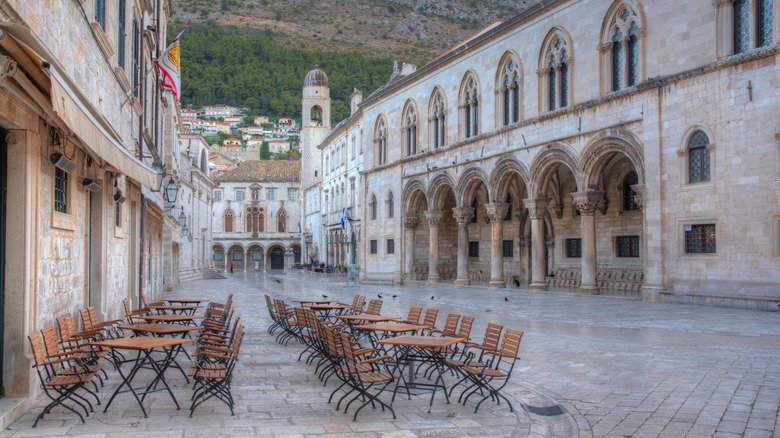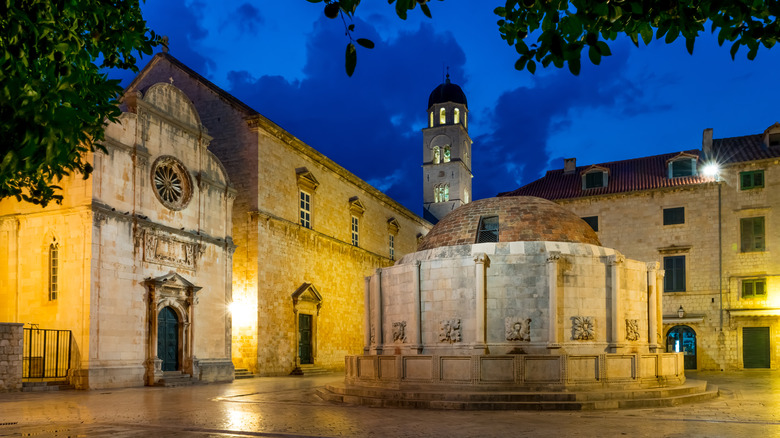Visit This European City For An Incredible Look At Historic Architecture
If you've seen the show "Game of Thrones" and recall the fictional capital of Westeros, King's Landing, a particular European locale might spring to mind. The city of Dubrovnik has gained fame as one of the filming locations for the iconic series. Also known as the "Pearl of the Adriatic," it's the perfect destination for a historic getaway. Dubrovnik's Old Town has been a UNESCO World Heritage Site since 1979 because of its outstanding medieval architecture and cultural significance.
Situated on the southeastern coast of Croatia, Dubrovnik is a present-day time machine. Dating back to the 7th century, this walled city has witnessed everything from warfare to diplomacy. Its pivotal role as a trading center during the Middle Ages and Renaissance is evident in the meticulous preservation of its buildings, streets, and fortifications. From the 14th century until 1808, Dubrovnik was the capital of the maritime Republic of Ragusa, the historical name for Dubrovnik.
One of the best ways to immerse in Dubrovnik's history is to walk along its city walls. Spanning over 1 mile in length and reaching heights of up to 82 feet, these famed walls were constructed between the 13th and 17th centuries and have safeguarded the city from both pirates and empires. Dubrovnik's walls are one of Europe's most preserved fortification systems. They even survived a 1667 earthquake that practically destroyed the whole city. As you navigate the robust fortifications, you are rewarded with panoramic views of the shimmering Adriatic Sea and the red-tiled rooftops of the Old Town.
Palaces and monasteries of Dubrovnik
The Rector's Palace, located in the heart of the city, once served as the seat of the Rector of the Republic of Ragusa. This Gothic-Renaissance edifice, dating back to the late 15th century, symbolizes the city's former political power. While the exterior boasts an elegant façade and a harmonious blend of architectural styles, the interior is a museum showcasing artifacts from the past. Here, visitors can admire portraits of the city's rulers, old coins, and medieval weaponry, all narrating tales of a bygone era.
The Franciscan Monastery is another unique Dubrovnik site. Established in the 14th century, the monastery houses one of the oldest functioning pharmacies in the world since 1317. But it's not just the ancient remedies that draw visitors. The monastery's cloister, with its Romanesque-Gothic columns and arches, is a serene haven, while its library holds a treasure trove of over 70,000 ancient manuscripts and incunabula (books printed before 1501!).
Another emblematic structure of Dubrovnik's past is the Sponza Palace. Constructed in the 16th century, this Renaissance building once played a multifaceted role as a customs house, mint, bank, and treasury. The atrium of the palace, with ornate archways and detailed stonework, is etched with a Latin inscription, "We are forbidden to cheat or falsify measures, and when I weigh goods, God himself is weighing them with me." Clearly, they were not messing around in there. Today, it is home to the expansive Dubrovnik Archives and a cultural center.
A haven for historic architecture
The Church of St. Blaise is dedicated to the patron saint of Dubrovnik. A stunning example of Venetian Baroque architecture, the church is easily recognized by its distinctive dome and the statue of St. Blaise holding a model of the city. The Festivity of Saint Blaise is held annually on February 3rd — it might be worthwhile to time your visit around this event. It's a blend of religious ceremonies and local traditions and has been inscribed on the UNESCO Representative List of the Intangible Cultural Heritage of Humanity.
Finally, every thriving city needs water, and Dubrovnik has had that down pat since the 15th century. Onofrio's Fountain is a large, circular fountain that was part of a complex water supply system built some 700 years ago. It's adorned with 16 carved masks through which drinkable water flows, quenching the thirst of the public. Dubrovnik had a complex aqueduct system and several fountains bringing water from Šumet, a fresh spring, over 7 miles away.
Some historic architectural sights, like Onofrio's Fountain and the Church of St. Blaise, are free to visit. However, most landmarks in Dubrovnik have entrance fees to keep them protected and maintained. This includes the City Walls ($30), Rector's Palace ($15), Franciscan Monastery ($5), and Sponza Palace ($3.50 to see the historic archives). It might be a good idea to purchase the Dubrovnik Pass, which gives access to top attractions for a pretty good value (about $37 for a day pass). For architecture and history lovers, visiting Croatia would be a trip etched in the stones of memory.


